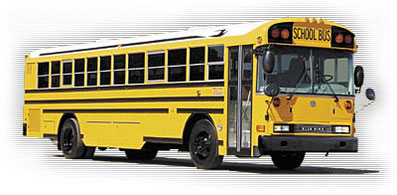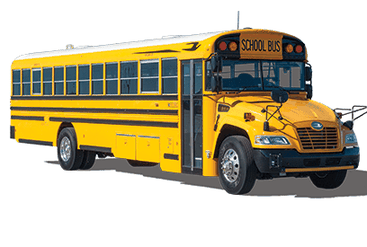
BLUE BIRD Coach Manuals PDF


BLUE BIRD Bus History
Some BLUE BIRD Coach Owner Manuals PDF are above this page.
The company's activity began in 1927 and has not changed much over time. Since its inception, Blue Bird has specialized in the production of school buses and special vehicles for transporting prisoners. The company also specializes in various bus technology. The headquarters is located in Fort Valley, Georgia.
The founder of the company - Albert L. Lewis did not use his name for fear of the wrong name of the buses, and the very name Blue Bird came to him after painting one of the buses in yellow and blue for transporting children to various events. In 1937 the company began production of all-metal bodies for buses, thereby significantly improving their safety. Instead, wooden fences were used on the buses. The inventor drew the idea of creating an all-metal bus, looking at agricultural wagons.
Blue Bird was one of the first companies to use fully metal bodies, despite the lack of material during the Second World War. The company's engineers also developed in 1939 a unique black-and-yellow coloration of school buses, which was accepted as the only correct one for school buses and is used in the US to this day.
After the end of World War II, changes in the school systems of the US assumed the division of the school into different classes. Primary, secondary and high schools have become familiar to America. Unfortunately, for most children this meant the absence of a school in walking distance and the demand for road transport at that time increased several times. Being, in fact, the only specialized production of buses in the US, Blue Bird won a tender for the supply of a huge number of school buses. This allowed to invest in own development of the chassis and a special tire profile, which was presented at an international exhibition and received positive assessments from a large number of experts.
Since 1948, the company's unique style of school buses has become a standard of quality and safety. It is used in the US to this day. Blue Bird became the first company that delivered almost monopolistically throughout America in the absence of competition from other suppliers. As a result, the company became the first in America bus company, which produced its buses entirely in its own production.
In 1958, an important event occurred in the history of Blue Bird. The company's branch opened in Canada and began supplying school buses for this country, and in 19565 a new plant of the company was opened in Latin America. For the Asian and European market, chassis delivery from America proved to be economically unprofitable and the company developed its own body to install on existing bases from local manufacturers: Mercedes-Benz, Toyota and Nissan Diesel.
Albert Lewis Sr. died in 1962. By that time Blue Bird was the fourth in the world in terms of the number of school buses produced. In 1980, the company became one of the 6 largest auto corporations in the US, along with other major bus manufacturers. In the 1980s, the last school boom was significantly reduced, due to the emergence of a large number of private cars and the movement of education to the suburbs. As a result, many automakers went bankrupt and closed. Blue Bird not only maintained its position at this time, but also became the largest US bus manufacturer. Now every third school bus in America is produced by this company.
Since 1996, the company is beginning to reorganize, which leads to the emergence of more maneuverable minibuses for private schools. Unlike big buses, they get more progressive control and can carry fewer children, spending less fuel. The company also produces transport for people with disabilities.
New modes of transport received great public support and were well received in the automotive world.
Currently, the company has teamed up with the Canadian bus manufacturer Girardin Facilities, having formed the company Blue Bird Micro Bird. It specializes in the production of minibuses for various purposes. Most of the company's shares belong to the largest bus manufacturer in the world - Volvo.
